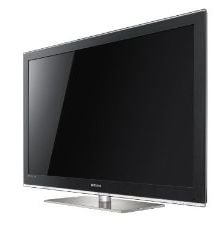Buying A 3D TV? Be Sure to Know What You're Getting In To...

3D TV: Everything You Need To Know!
Back in 2011, we first saw "3D fever" begin to spread -- 3D movies, Blu-Ray, and video games...but they require one key piece of equipment: a 3D TV. Learn all about 3D TV and get yourself knowledgeable for the newest replacement for HDTV with this all-inclusive guide!
What Is 3D TV?
Understanding HDTV vs. 3D TV
It looks like your new HDTV is about to give you a new-found sense of buyer's remorse. A new revolution in the consumer electronics realm, 3D TV, is to blame. Bringing forth all of the hype created by Avatar and the bandwagon of 3D films that came out after it, the same level of entertainment is available for your home with 3D TV - movies, live broadcasts, video games, you name it!
Basically, a 3D TV is a modified HDTV that is capable of displaying 3D-ready footage, that can only be seen with polarized glasses.

3D TV vs. 3D-Ready TV
The choice you'll have to make
It's really important to be aware of one thing: there will be two pieces of consumer electronic here that you'll have to decide from. Either you'll splurge and outright buy a 3D TV, all ready to go and capable of displaying full 3D broadcasting and imagery without the need of anything else.
Or, you'll consider a lower-cost 3D-ready HDTV, which is basically an HDTV that has been fitted with the technology that displays the image that will give you a 3D perspective. However, it will require a separate 3D IR Emitter that will be needed to sync with your 3D glasses.
Both TVs are capable of displaying 3D broadcasting, as well as 3D movies.
If you plan on getting one, would it be a 3D TV, or a 3D-Ready TV?

What Does a 3D TV Look Like?
My first time viewing 3D TV footage
In March 2010, I attended the iMedia Summit in Bonita Springs, Florida and was able to get a sneak peek at a prototype 3D TV. Using regular polarized glasses (not to be confused with the battery-powered shutters), I watched a preview of ESPN 3D. At the time, it was a total conversation piece because not many had actually seen a 3D TV in person (whereas you could simply check one out at your local electronics store these days).
The 3D Experience on a 3DTV
This run-of-the-mill looking HDTV displayed an image comparable to what you see on a big-screen 3D movie release: the image within the TV itself looks almost like a "diorama," as the picture appears to have an in credible sense of depth, giving the illusion of 3D. The image doesn't leave the screen; however, the foreground objects truly appear in the foreground, as background objects have their own sense of depth and blurring.
3D TV has been explained to give the illusion of showing objects that appear up to 50 cm in front of the screen. Sony, Samsung, Toshiba, LG, Mitsubishi, and Philips are just some of the technology giants who are taking 3D TV very seriously, and are participating in an all-out 3D marketing war.
...and Without the Glasses?
Without the glasses on, the image appeared slightly overlapped, as if one had double vision. It's noticeable enough to give you a headache; therefore, making it unwatchable without glasses.
In short, it's really something great. From the instant I watched some 3D TV, I knew this was not going to be some short-lived fad, and I knew I wanted one. But...there's no denying it - the glasses are annoying. Everyone will need a pair, and whoever doesn't have one simply cannot watch anything with their naked eye.
Video Demonstration of a 3D TV

Do 3D TVs Require Glasses?
Stereoscopic vs. Autostereoscopic 3D TV
Stereoscopic 3D TV
The first "wave" of 3D TVs will, and those are the ones that first hit the market in mid 2010. Stereoscopic 3D TV requires the use of active shutter glasses. Rather than using that cheap plastic pair you swiped from seeing Avatar, the real deal 3D TV glasses are battery powered, receive a signal directly from the TV via a built-in IR emitter, and use shutter technology for proper image display. Their design is continually being modified to be more comfortable to wear.
Autostereoscopic 3D TV
Another type, Autostereoscopic 3D TV, doesn't require glasses. Simply watch TV, it's already displaying as three-dimensional without the need to wear anything. Autostereoscopic 3D TV already exists, as does a working model. Don't expect to see these sets on shelves right away. At CES 2011, a CNET spokesman estimated that glasses-free 3D TV won't hit the shelves until 2012 or 2013.
Are 3D TVs Always Showing Things in 3D?
Will you have to sacrifice traditional 2D?
The big sigh of relief is that your 3D TV will not have to be in "3D mode" all the time, you can simply turn it off. Every single manufacturer is boasting the same claim: you can watch movies and broadcasts in full quality 3D, or turn it off entirely and enjoy the same high quality 2D television you loved with standard HDTVs on the market.
What's the Technological Diffrence Between an HDTV and 3D TV?
Why is it so much more expensive?
Going back to my reference about the sneak peek of a 3D TV that I saw in early 2010, a Panasonic spokesman answered this very interesting question.
The answer might shock you: the difference between an HDTV and 3D TV, technologically, is a $20 converter that the 3D TV has inside of it. As with anything else, you're paying a lot more just for new technology. That's why the new 3D TV you're looking at doesn't only cost $20 more than a comparable HDTV!
Is It True that 3D TV Gives You Motion Sickness?
Understanding why some people get sick from 3D
It's possible, but there are some factors involved. There's no doubt about it, many people have gotten sick from 3D movies, and many may suffer the same fate with 3D TV. 3D sickness, in many cases, is caused by sitting too close to the screen.
In other cases, people who normally get motion sickness may experience the same symptoms with 3D motion pictures. This will undoubtedly cause problems for 3D gaming, which will be the next wave for that industry. As previously stated: 3D TVs give you the option to simply turn off 3D mode. Therefore, you can use a 3D TV as a regular HDTV if necessary.
How Can You Watch DVDs in 3D?
Your 2D DVDs won't auto-magically convert themselves into 3D on your new 3D TV. The answer: 3D Blu-Ray. That's right, it's the next evolution of the Blu-Ray player. And yes - you will have to buy the new 3D versions of your favorite movies all over again...that is, if you care to see Avatar in 3D, as opposed to 2D on its plain old 2D Blu-Ray release.
3D Blu-Ray isn't expected to become widespread until late 2011. Most people don't even know of it yet, nor is it practical to purchase if you don't have a 3D TV. After all, it simply won't work on a regular 2D HDTV. 3D Blu Ray players are backward compatible, and you can still watch your standard Blu-Ray discs on them.
Will Broadcasting Be in 3D?
The news, sitcoms and more...in 3D?
You better believe it: 3D television will also have its own broadcasting format, too. It won't be long until you see major networks like ABC and NBC displaying a "3D" watermark on their programming! There have been market tests across the globe, broadcasting the news, sports games and more in 3D. The general reception was positive, and this will undoubtedly become more mainstream as the months progress.
What's your interest in watching movies & broadcasts in 3D?
Should I get a 3D TV or an HDTV?
This is a common question amongst anyone in the current day who is looking to buy a non-3D HDTV.
The "yes" argument
3DTVs can toggle between 3D and 2D mode. So, you're not forced to watch things in 3D all the time. This alone gives them an advantage over a HDTV (same features you know and love, plus 3D whenever you want it).
The "no" argument
3DTVs currently require 3D glasses. What do you do when you have 10 guests over, and only 4 of them bring their own? Know that Autostereoscopic 3DTVs are right around the corner. They're the ones that don't require glasses. Would you have buyer's remorse in a few years? That is the question.
How Much Does A 3D TV Cost?
Introductory pricing
It's not too far off from what you were expecting. 3D TV sets launched in the ballpark of $2,000 - $4,000 for a full 3D TV, or around $1,500 for a 3D-ready HDTV.
Do I Need To Buy Anything Else?
Other components that make things happen
With 3D TVs come components. All 3D TVs will come shipped with one pair of 3D glasses, but additional ones will cost in the range of $50-100 per pair. If you have a "3D ready" TV, you'll need to purchase an IR emitter to match the signal of your 3D glasses, which may cost an additional $50.






